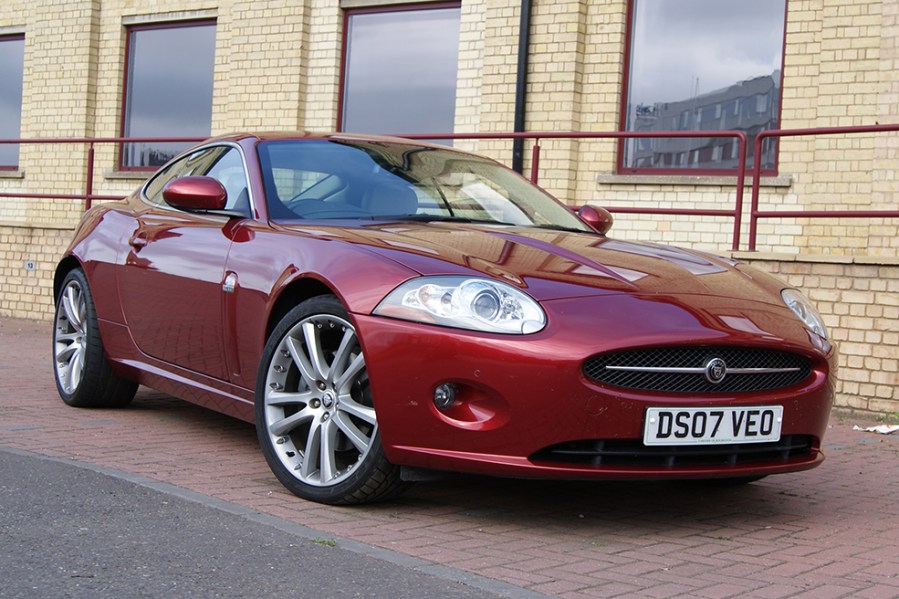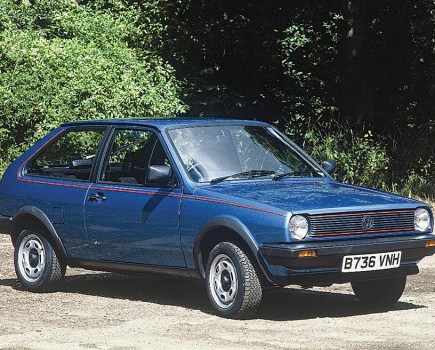The XK8 spearheaded Jaguar’s revival but the aluminium-bodied X150 XK was a high-tech way to leapfrog the Germans
As the first all-new model to be released under Ford ownership, the original X100-generation XK8 was an impressive statement of intent fired across the bows of all the industry pundits who had forecast an immediate downturn in product in the pursuit of volume.
Its success was reflected in a near decade-long lifespan, although as the years passed the age of the underlying design began to show – notably the hefty kerb weight which came as an unavoidable penalty of inheriting the XJ-S platform.
Its replacement couldn’t have been more different and illustrated Ford’s confidence in its Coventry subsidiary. Having launched the aluminium-bodied X350 generation XJ in 2002, Jaguar had become only the second manufacturer after Audi to employ the idea for volume production and in fact would go on to embrace aluminium even more enthusiastically than Ingolstadt. The same technology was to be used in the new coupe to good effect where it allowed a reduction in kerb weight of some 100kg over its steel-bodied predecessor.
Working without the constraints of an existing platform, the design team was able to give the new car – developed under codename X150 – more contemporary proportions, with a front axle line pushed further forwards to avoid a long overhang.
This also permitted the car’s cabin to sit more centrally within the wheelbase which in addition to improving its appearance allowed usable rear seats. Meanwhile, the styling was a masterful job of combining the classic Jaguar silhouette with more contemporary design language, discarding the retro curves in favour of sharp creases. The horizontal creases along the car’s flanks were referred to as ‘power lines’ intended to give the impression of speed and movement, while increased familiarity with the riveted and bonded aluminium body construction allowed the shape to avoid the barrel sides of the contemporary XJ while also permitting a hatchback boot on the coupe.
Meanwhile, the drivetrain was essentially carried over from the late-model XK8, comprising the 300PS 4.2-litre AJ-V8 engine and automatic transmission, with the ALC Concept previewing the finished car at the January 2005 Detroit show and differing from the production car in only the bumpers, lamps, wheels and side vents.
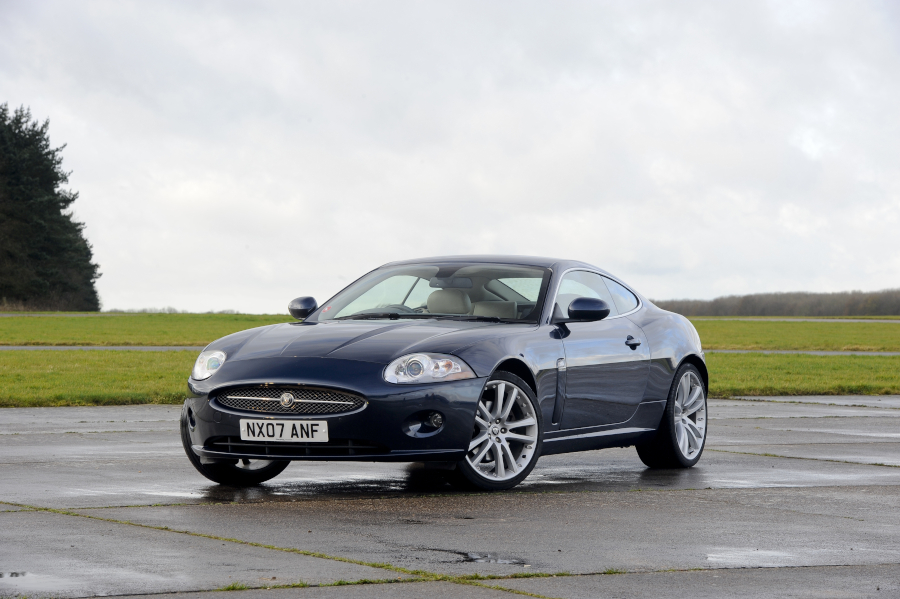
The production car was launched at the Frankfurt show in September of the same year in both coupe and convertible form as the XK, the ‘8’ having been dropped for the new car. In 2007, the XKR was announced, using the same 420bhp supercharged 4.2 as its predecessor, plus bonnet vents, different bumper and quad exhaust. Unlike the X100 cars, both models used the same ZF six-speed automatic as the XK rather than the Mercedes box used in the original XKR, with a pair of steering wheel-mounted gearshift paddles to access a manual mode.
From 2007 to 2008, the XKR Portfolio was offered, including big Alcon brakes with six-pot calipers, 20-inch Cremona wheels, side vents, uprated audio and machined aluminium interior trim and other details. All were Celestial Black or Liquid Silver. A 200-off XKR-S special edition was introduced in 2008, boasting bigger brakes, body styling and uprated suspension with a speed limiter raised to 174mph. Just 50 were made for the UK.
The XK60 was also offered in 2008 to celebrate the 60th anniversary of the original XK120, a cosmetic package including 20-inch Senta wheels, alloy shift knob and gate, plus front and rear spoilers, bright side vents and mesh grilles.
In 2009, the XK range received a mid-life facelift with revised lights and bumpers, plus the rising rotary gear selector introduced with the XF. The big news however was a boost in capacity taking the V8 out to 5 litres accompanied by direct injection and continuously variable valve timing on both intake and exhaust. Known as the ‘Gen III’ engine, the AJ133 shared the basics of the original design but used an all-new block casting.
In 2010, a bodykit option was offered as the Speed Pack in conjunction with removal of the 155mph speed limiter, alongside the Black Pack option which added black alloy wheels and trim details. A limited edition of XKR75 Goodwood cars was also produced this year, 20 of them in right-hand drive, boasting a 530PS engine upgrade, as well as bodykit, sports exhaust and 20-inch Vortex wheels alongside other details.
In 2011, the XKR-S name returned, this time a full production model boasting 550PS and 502lb.ft with an ‘active exhaust’ system, uprated suspension, sports seats, 20-inch Vulcan wheels and bigger brakes. Meanwhile, the rest of the range gained standard-fit sat nav and reversing camera as well as styling changes.
In 2014 the writing was on the wall as Jaguar prepared to launch the all-new F-Type and two run-out special editions were announced: the XK Dynamic R came with the Black Dynamic pack, stiffened and lowered suspension and Speed Pack bodykit, while the XK Signature boasted a 385PS version of the non-supercharged engine as well as 20-inch Kalimnos wheels, diamond quilted leather, suede headliner, piano black interior trims and aluminium pedals.
Production finally ended in July 2014 and the car has never been fully replaced in the Jaguar range. Perhaps surprisingly, the total production amounted to 27,612 units which lags well behind the 90,064 sales notched up by its predecessor.
Today its relative youth and modern construction makes the aluminium XK an interesting alternative to the X100 generation, without the older car’s well known rust issues. The early cars are currently very affordable, so here’s what you need to know.
Bodywork
The aluminium construction means these cars don’t rust in the conventional way, but like the contemporary aluminium X350 XJ it’s not unusual to find aluminium corrosion bubbling up at panel edges. Often seen on the lower extremities of the bodywork and in areas where the paint is chafed by bumpers and trim pieces, this can appear as powdery oxidisation.
The more fragile aluminium skin is also easily dented in car parks and although it can be sorted by the usual paintless dent repair techniques, it requires more labour to do neatly so can be more expensive.
Like so many cars of this era, the plastic headlights can become cloudy which is unsightly at best and an MoT failure at worst. Flatting and polishing is an easy DIY job though.
In order to meet pedestrian safety regulations with a low front end, the XK was fitted with an impact detection system which uses airbag-style pyrotechnics to raise the rear of the bonnet using sensors along the front crossmember. Called Pedestrian Contact Sensing Bonnet System, this system can produce a dash warning light when a fault is detected. it’s usually the two outer sensors causing the issue and upgraded replacements are around £70 each.
Water can leak into the LED rear lights and the foglight, which will eventually cause a short and a blown fuse, although it can be sorted with a replacement seal.
Engine and transmission
Both the 4.2 and 5.0-litre engines are generally reliable and as ever, maintenance is key, preferably by specialists who know these cars.
On the 4.2, perished vacuum hoses can split which will cause an EML warning light, while thermostat failure is also well known. Obviously this can cause overheating, which can also be down to an accumulation of leaves around the radiators.
The supercharged 4.2 can also suffer when the two-piece coolant pipe between the cylinder banks – known as the valley pipe – perishes and leaks in the supercharger heat, although pre-emptive replacement isn’t too costly and can even be a DIY proposition if you have a day spare. The 4.2 XKR can also puff a little oil smoke on cold start, which is thought to be the valve stem seals.
On the 5-litre engine, water pump failure is common, as is supercharger noise which was addressed by Jaguar using a revised supercharger nose section. Timing chains can also get noisy and in extreme cases a stretched chain will result in a stored fault code for incorrect cam timing.
One costly failure can involve the catalytic converters on the 4.2 engine, which use two separate cores within a single housing. The upper core can become loose inside the housing and then touch one of the oxygen sensors, flagging a fault code for inefficient catalysts and causing poor running. Used cats or aftermarket sports cats are the cost-effective solution.
The ZF gearbox can leak around the sump, but this can be replaced when an oil and filter service is performed, which should be done every 60,000 miles. Otherwise, the unit is reliable and transmission issues are generally limited to the electronically controlled differential or ‘e-diff’ on the 5-litre cars, with a message indicating ‘E-Diff system error’ or ‘dynamic [or winter] mode unavailable’. This was a common issue when the cars were new and many received a replacement differential motor, while many owners report the fault occurs infrequently and can be solved by switching off and on or can be solved by cleaning corroded electrical connectors.
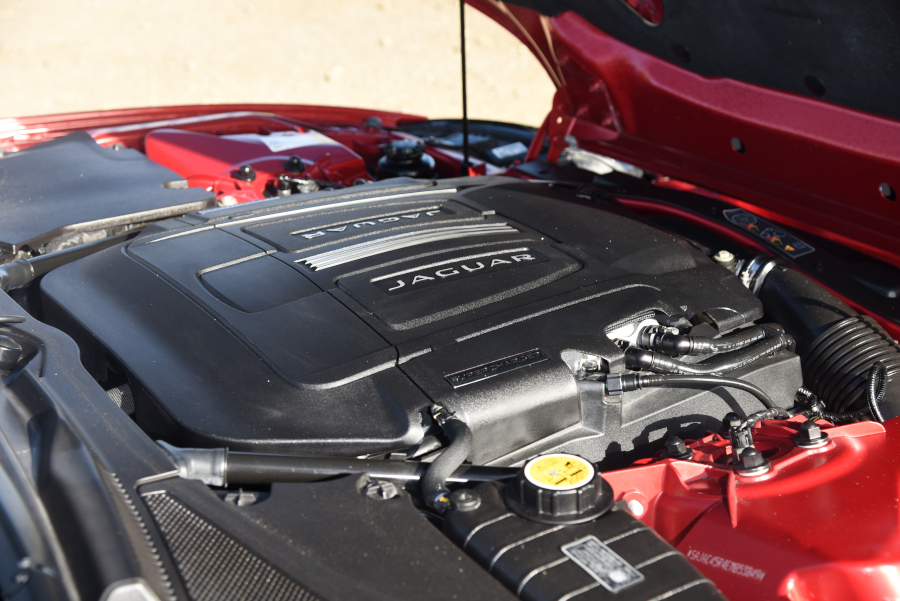
Suspension, steering and brakes
The bodywork may not rot, but the suspension is carried on steel subframes which can rot along the seams, so take a look at their condition. Surface rust is common, but major corrosion can mean a lot of dismantling to sort if welding is required.
The suspension design differs from the XK8 in that it doesn’t use the classic Jaguar IRS but double wishbones all round which means that worn bushes aren’t quite as labour-intensive to replace. Failing lower arm bushes can make the car feel imprecise, while tired front reaction arm bushes (the ‘banana arms’) can cause a wobble under braking as well as uneven tyre wear. Worn damper bushes will cause a hollow rattle.
Active damping was standard on the XKR and optional on the normally-aspirated cars, replacement dampers being around £450 each.
It’s a conventional four-disc system with OE-spec front discs at around £150 a pair and pads £68 for a set. As the cars have aged, seized calipers have become more common and it’s generally obvious when the car doesn’t pull up squarely or if one wheel is noticeably hot. Exchange calipers are the easy solution at around £80.
The electronic handbrake can be tricky for DIY mechanics and needs a diagnostic tool to activate the service mode before replacing the pads. Winding back the piston without this can cause damage.
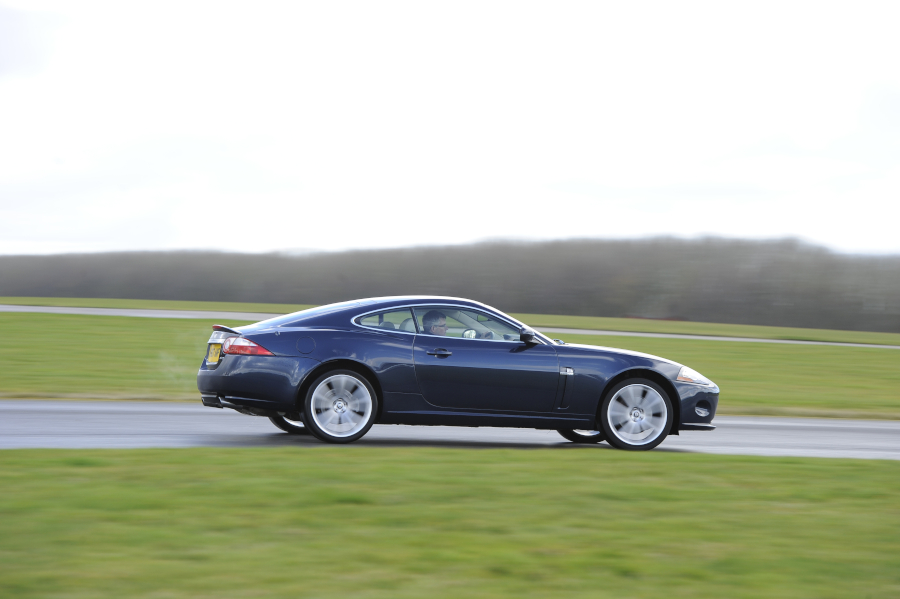
Interior, trim and electrics
Considering the high spec of most XKs, the onboard gadgetry is generally reliable, although the temperature sensors for the heated/cooled seats can fail. The seat position memory can also go haywire, but specialists with the proper diagnostic kit can recalibrate it.
The touch screen sat nav can freeze, but a software upgrade can solve the problem and again, can be performed by a well-equipped specialist.
Check for damp footwells which can have a number of causes including a blocked air conditioning drain on earlier cars (a costly dash-out fix) or blocked drains from the scuttle area allowing water to overflow through the heater.

Jaguar XK: our verdict
Jaguar never properly replaced the XK and today it represents something of an ultimate evolution of the GT lineage which began with the E-type. The aluminium-bodied X150 is still a very modern-feeling car to drive and offers a polished feel way ahead of any contemporary Aston Martin, while also being far easier to live with than the Bentley Continental. As a fun performance car which can do it all, there’s not much to beat it.
Jaguar XK timeline
2005
All-new XK is launched at the Frankfurt show in September
2007
The supercharged XK is announced
2008
XKR-S and XK60 limited editions are produced
2009
The X150 range is facelifted. The V8 engine is enlarged to five litres
2010
The Speed Pack and Black Pack are offered. The XKR75 Goodwood limited edition is produced
2011
The XKR-S returns as a production model
2014
The XK Dynamic R and XK Signature are produced as run-out models

